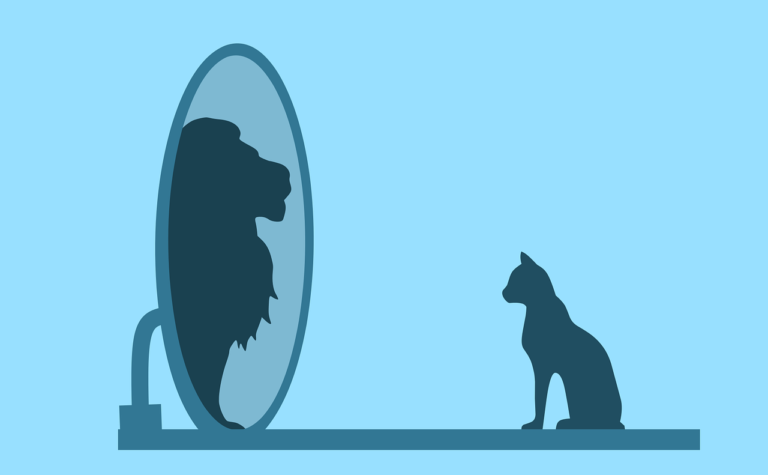
Cognitive Behavioral Therapy CBT techniques mental health improvement overcoming negative thoughts stress and anxiety management
Cognitive Behavioral Therapy (CBT) is a widely recognized and scientifically supported form of psychotherapy that helps individuals alter their thought patterns and behaviors. Developed in the 1960s by psychiatrist Aaron Beck, CBT has become one of the most effective therapeutic approaches for addressing various mental health issues, including anxiety, depression, and stress. This comprehensive guide will delve into what CBT is, its numerous benefits, and how you can implement its techniques into your everyday life.
Contents
What is Cognitive Behavioral Therapy?
CBT is based on the principle that our thoughts, feelings, and behaviors are interconnected. By identifying and challenging negative thought patterns, we can influence our emotions and behaviors positively. Unlike other therapeutic approaches that might focus on past experiences, CBT emphasizes the present, making it a practical method for dealing with current issues.
The Benefits of CBT
- Evidence-Based Approach: CBT is backed by extensive research, demonstrating its effectiveness for various mental health conditions.
- Short-Term and Structured: CBT is typically a short-term therapy, often lasting between 8 to 20 sessions. It is highly structured and goal-oriented, focusing on achieving specific, measurable outcomes.
- Skill Development: CBT equips individuals with practical skills that can be applied long after therapy has ended, making it a lifelong investment in mental health.
- Empowering: By learning to modify your thought patterns and behaviors, you gain greater control over your mental health and well-being.
- Versatile: CBT is adaptable and can be tailored to address a wide range of mental health issues, from anxiety and depression to phobias and post-traumatic stress disorder (PTSD).
How to Use CBT Techniques in Everyday Life
- Identify Negative Thoughts: The first step in CBT is becoming aware of negative thoughts and beliefs. This involves paying close attention to your internal dialogue and recognizing when your thoughts are irrational or unhelpful. For example, if you catch yourself thinking, “I’ll never succeed,” acknowledge this as a negative thought that needs to be addressed.
- Challenge Your Thoughts: Once you’ve identified a negative thought, question its validity. Ask yourself if there is concrete evidence to support or refute it. Consider alternative, more balanced perspectives. For instance, instead of “I’ll never succeed,” you might challenge this thought by recalling past successes and recognizing your potential for future achievements.
- Reframe Negative Thoughts: Replace negative thoughts with more positive and realistic ones. This doesn’t mean ignoring problems but rather viewing them in a more constructive light. For example, instead of thinking, “I can’t handle this,” reframe it to, “This is challenging, but I have the skills to manage it.”
- Behavioral Activation: This technique involves engaging in activities that are enjoyable and rewarding to improve your mood. When you feel down, it’s common to withdraw and avoid activities you usually enjoy. CBT encourages you to plan and participate in positive activities, even when you don’t feel like it.
- Mindfulness and Relaxation Techniques: Mindfulness involves paying attention to the present moment without judgment. It can help reduce stress and improve emotional regulation. Techniques such as deep breathing, progressive muscle relaxation, and meditation can be incorporated into your daily routine to help manage stress and anxiety.
- Problem-Solving Skills: CBT teaches structured problem-solving techniques to help you tackle challenges more effectively. This involves identifying the problem, brainstorming potential solutions, evaluating the pros and cons of each solution, and then implementing the best one.
- Keeping a Thought Diary: Writing down your thoughts, feelings, and behaviors can help you track patterns and make connections between them. This can be a valuable tool for identifying triggers and developing more adaptive responses.
- Exposure Therapy: For those dealing with anxiety or phobias, CBT often includes gradual exposure to feared situations or objects. This helps reduce fear and avoidance over time. For instance, if you have a fear of public speaking, exposure therapy might involve starting with speaking in front of a small group and gradually increasing the audience size.
- Cognitive Restructuring: This technique involves identifying and challenging distorted thinking patterns. It requires examining the evidence for and against a particular thought, considering alternative perspectives, and reframing the thought in a more balanced way. For example, if you think, “I always mess up,” cognitive restructuring would involve finding evidence of times when you succeeded and recognizing that mistakes are a normal part of learning.
- Self-Monitoring: Keeping track of your thoughts, emotions, and behaviors can help you identify patterns and triggers. This self-awareness is crucial for making positive changes. For example, if you notice that certain situations consistently lead to negative thoughts, you can work on developing strategies to cope with those situations more effectively.
Practical Applications of CBT in Daily Life
1. Morning Routine
Start your day with a positive mindset by practicing mindfulness meditation or deep breathing exercises. This can help set a calm tone for the day and improve your focus.
2. Work Environment
Use CBT techniques to manage work-related stress. If you find yourself overwhelmed by a project, break it down into smaller tasks and tackle them one at a time. Challenge any negative thoughts about your ability to complete the project successfully.
3. Social Interactions
Improve your communication skills by practicing assertiveness and active listening. Use CBT techniques to reframe any negative thoughts you might have about social situations, such as “People will judge me,” to more positive ones like “I have valuable things to contribute.”
4. Evening Reflection
End your day with a thought diary, noting any negative thoughts or behaviors that occurred and how you addressed them. Reflect on what worked well and what you can improve.
5. Handling Criticism
When you receive criticism, use cognitive restructuring to view it as constructive feedback rather than a personal attack. This can help you respond more calmly and learn from the experience.
6. Developing Healthy Habits
Apply behavioral activation to develop healthy habits such as regular exercise, balanced eating, and sufficient sleep. Plan enjoyable activities that promote well-being and stick to them even when motivation is low.
7. Overcoming Procrastination
Use CBT techniques to challenge procrastination by breaking tasks into smaller, manageable steps. Reward yourself for completing each step, reinforcing positive behavior.
8. Dealing with Anxiety
In moments of anxiety, practice deep breathing or progressive muscle relaxation to calm your body. Challenge anxious thoughts by examining the evidence for and against them, and replace them with more balanced thoughts.
9. Building Resilience
When faced with setbacks, use CBT to build resilience by focusing on what you can learn from the experience. Recognize that setbacks are a normal part of life and an opportunity for growth.
10. Enhancing Relationships
Use CBT techniques to improve your relationships by being mindful of your thoughts and behaviors. Practice gratitude by regularly expressing appreciation for the people in your life.
Conclusion
Cognitive Behavioral Therapy offers a robust set of tools for managing mental health and enhancing overall well-being. By understanding and modifying unhelpful thought patterns and behaviors, you can gain greater control over your emotional responses and lead a more fulfilling life. Whether you are dealing with specific mental health issues or simply looking to improve your coping skills, incorporating CBT techniques into your daily routine can provide significant benefits.
Crux of the Article
Cognitive Behavioral Therapy (CBT) is a powerful and practical approach to improving mental health by focusing on the present and modifying unhelpful thought patterns and behaviors. With a strong evidence base and a range of versatile techniques, CBT can help you manage stress, anxiety, and depression, while also enhancing your overall well-being. By incorporating CBT techniques such as mindfulness, cognitive restructuring, and behavioral activation into your daily life, you can develop lifelong skills for mental resilience and personal growth.
Sleep for Mental Health: 9 Tips for Enhancing Sleep Quality – UnfuckIntellect




